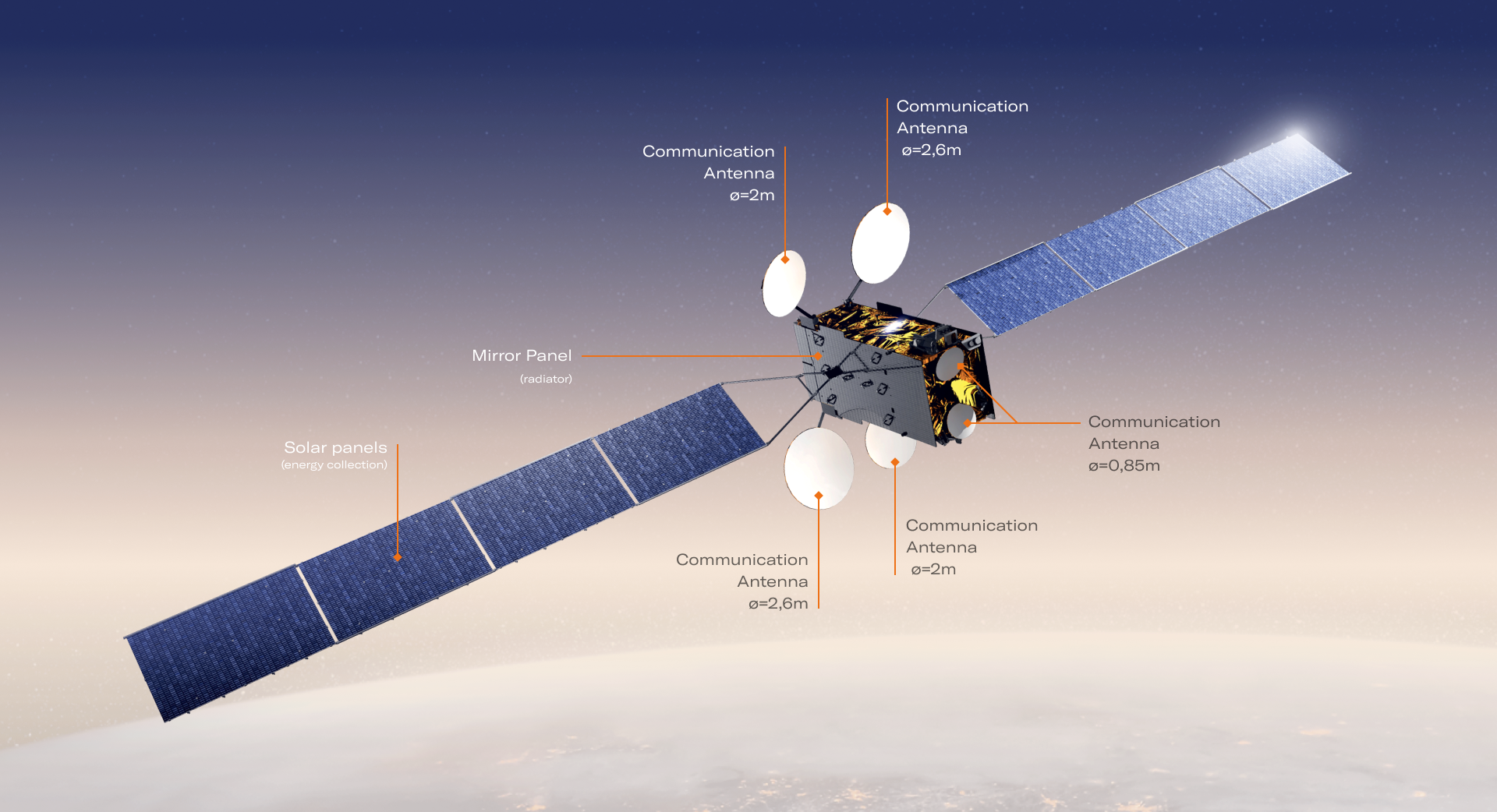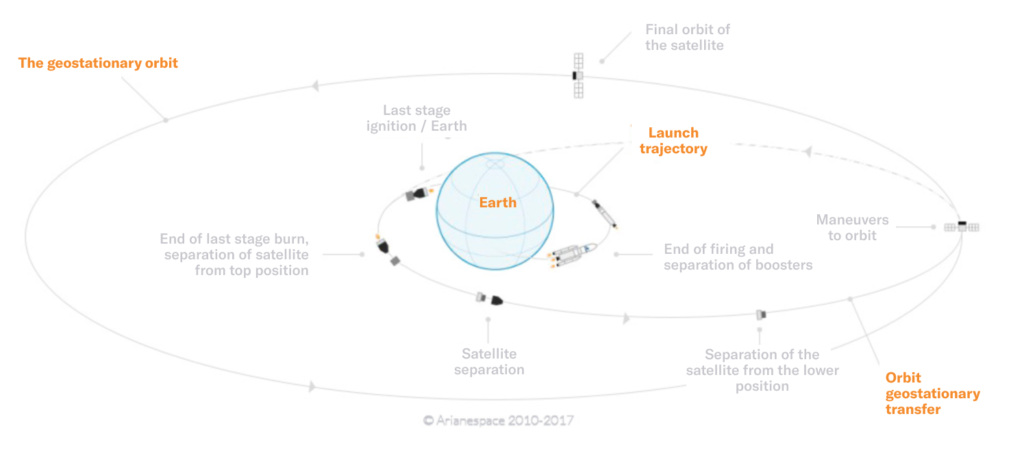SGDC
O SGDC
The Geostationary Defense and Strategic Communications Satellite (SGDC, Satélite Geoestacionário de Defesa e Comunicações Estratégicas) is a program by the Brazilian Federal Government with the goal of promoting internet service coverage across 100% of Brazilian territory as part of the National Broadband Plan, providing digital inclusion to all Brazilians long with secure, sovereign means for the Brazilian government to maintain its strategic communications.

Social and Economic Benefits
The program helped establish Visiona as an integrator of Brazilian satellites, having the expertise to become Brazil’s industrial right arm for designing and developing space solutions.
The satellite will bring broadband internet connection to all territories in Brazil, promoting digital and social inclusion to millions of citizens. The satellite is the ideal means of ensuring complete coverage in a continental nation like Brazil, complementing today’s fiber optics structures that may not be capable of providing services to all Brazilian cities. SGDC will also ensure secure strategic and defensive communications for Brazil. Moreover, the program has already trained over 30 engineers, allowing them to work with state-of-the-art tech in terms of satellite development and manufacturing.
Technology Absorption
Visiona, Telebras, the Ministry of Defense, the Brazilian Space Agency, and INPE, the entities participating in the SGDC program, are qualified to work with state-of-the-art geostationary satellite development and design technologies. Approximately 30 engineers worked side by side with Thales, the satellite manufacturer, over the course of the program and throughout all of its phases, from conception to the final acceptance tests.
Our engineers were trained in the following technologies:
- Orbit and altitude maintenance
- Useful loads operations
- Mission analysis
- Assembly, Integration, and Testing (AIT)
- Space project management
- Systems engineering:
- Altitude and orbit control (including propulsion)
- Onboard supervision
- Service communications
- Thermal controls
- Structure and mechanisms
- Power supply
- Useful loads engineering
- Subsystem engineering
- Solo segment
- AIT support activities (Product and Quality Assurance)
- Satellite-powered broadband network projects
System Specifications
LAUNCH AND ORBIT
Launcher: Ariane 5 ECA
Launch Base: Kourou, French Guiana
Orbit: Geostationary
Position: 75°W
SOLO SEGMENT
TT&C Centers: 1+1
Gateways: 4+1
PLATAFORM
Model: Spacebus 4000 C4
Width: 37 m
Height: 7 m
Weight: 5.8 tons
Power: 11 kW
Lifespan: 18 years
PAYLOAD
Ka and X bandwidth coverage: National
No. of Ka Bandwith Beams: 67
Ka Bandwidth Capacity: 58 Gbps
Ariane 5 Launcher
Arianespace’s Ariane 5 is a global reference among major launchers. Thanks to its high degree of precision in its missions, Ariane 5 can transport useful loads exceeding 10 tons for geostationary orbits (GTO) and over 20 tons for low-elevation orbits (LEO). This degree of performance ensures Ariane 5’s high rate of efficiency for telecommunications satellites. The Ariane 5 rocket has 98.7% reliability with an impressive 75 successful launches. Visit Ariane 5’s official website.
75 successful missions (all in French Guiana)
Two-passenger capacity for the Ariane 5 launcher
Airbus Launchers SAFRAN Main Contractor
5.4m in Diameter
50.5m in Height
780t in Mass
10t load for GTO
20t load for LEO
Launch Trajectory

The Geostationary Orbit
Geostationary satellites are always on a fixed point and rotate at the same speed as the Earth so as to follow its movement.
This allows the satellite to be used particularly for communications networks or for monitoring or surveillance purposes while covering an entire country’s total area.
